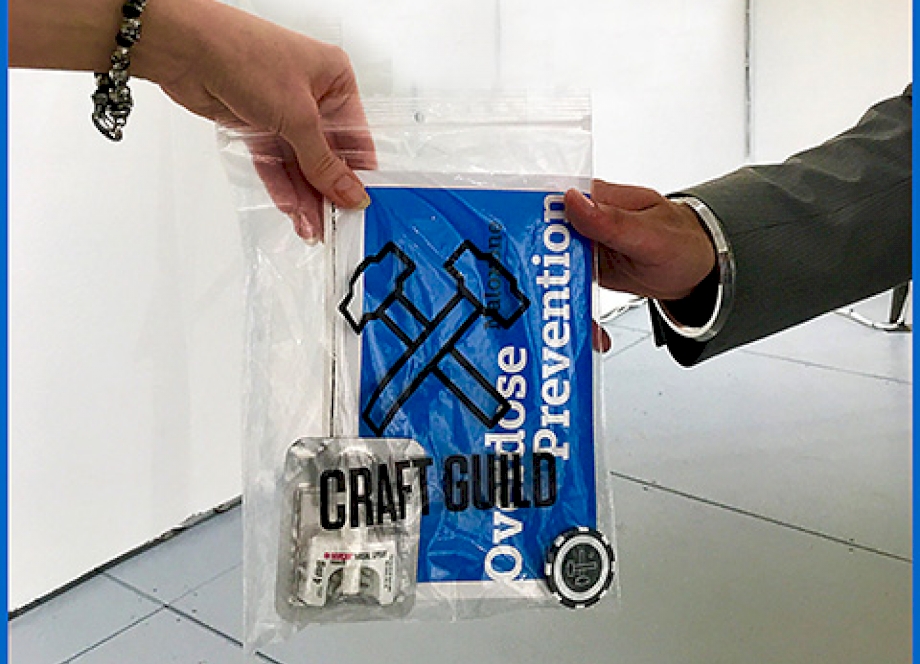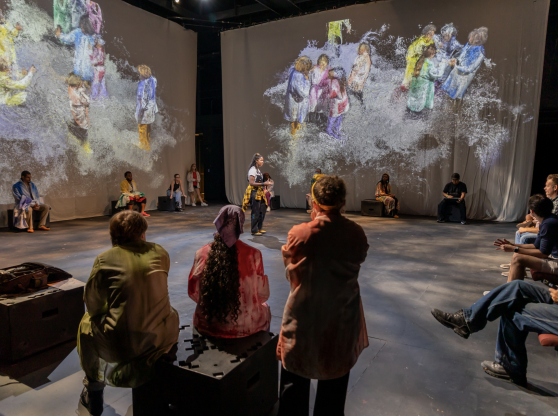SA+AH associate professor Dr. Craig Smith joined the Column Health, LLC team as the director of culture six months after the Massachusetts company was first established in 2014.
As director of culture, his job is to help co-founder and chief executive officer Colin Beatty develop a public face for the company, aid in community partnership programming and curate and design for the specific spaces. Smith and Beatty have collaborated on multiple projects and art exhibitions, including the 2012 exhibition Manifest: Armed at the Corcoran Gallery of Art in Washington D.C. This exhibition was also featured at the UF Harn Museum of Art in 2015.
The mission of Column Health is to destigmatize the negative stereotypes associated with addiction and recovery centers to facilitate self-actualization, treatment and recovery to improve the treatment and retention models.
Smith was the perfect person for this role at Column Health, especially with his interest, studies and devotion to the arts.
Smith received his undergraduate degree in studio art, photography and psychology from the University of Oklahoma. He then went on to pursue a master’s degree at the State University of New York at Buffalo, studying studio art practice and photography. Smith was also part of the prestigious Whitney Museum of Art: Independent Study Program and went on to study at Goldsmiths, University of London to obtain his Ph.D.
“My research background and specialization is in relational art, which brings people together in the specific time and space of the artwork,” Smith said. “This is the premise of how we think and utilize culture at Column Health.”
In only three years, four clinics have been opened in the Boston metropolitan area. Unlike the other Column Health clinics, the third clinic has a gallery space that is part of Column Health’s Craft Guild and is separate from the treatment area. This space is known as unaffiliate.us.
Unaffiliate.us is a public exhibit in an engaging, innovative space in Davis Square, a high pedestrian traffic-area. It allows artists, either in recovery or supportive of Column Health’s mission, the opportunity to showcase their art installations in an open display, giving a public face to public health.
Smith’s role for Column Health’s Craft Guild is to create artwork and also curate for this space, seeking artists that share Column Health’s mission to destigmatize addiction and loan their work for public display to increase awareness, networking and art in the local community.
Column Health’s Craft Guild is a way of materializing the sociability of the art practice. The guild changes often and flows based on the people included, whether it be people who suffered with addiction or people in businesses that support healthcare.
As Column Health continues to become larger and more successful, there is a hope that those former patients will use Column Health’s Craft Guild as a public platform for expression.
Smith said this is different from the way art is showcased in other places.
“Artwork and photography are looked at as representational and stands in the place of what really exists in the world, and representation is often perceived to be standoffish in that role,” Smith said. “Column Health is about social interactivity and community.”
Column Health’s Craft Guild has also spread beyond the Boston area.
In December 2017, Column Health’s Craft Guild was invited to attend the SCOPE International Art Show in Miami, Florida to showcase the unaffiliate.us exhibit.
Tom Fruin, an artist who previously suffered with opiod addiction, curated and showcased his works for the unaffiliate.us exhibit in Miami. The show educated attendees about opioid addiction, unaffiliate.us and a medication called Narcan (Naloxone) that can reduce the effects of an opioid overdose.
“At SCOPE, we were able to address the negative stigmas in the art world as well as in Miami by providing Narcan as a subtle way to highlight the opioid crisis and social stigma,” Smith said.
Smith says that Column Health is an example for students to see how art really happens in the world and how a market is not always dictated or defined through specific disciplines or guidelines. He states that art can be looked at in a way to filter the direct relationship between art and mental health to move Column Health’s mission forward in impacting the opioid epidemic in the United States and beyond.



